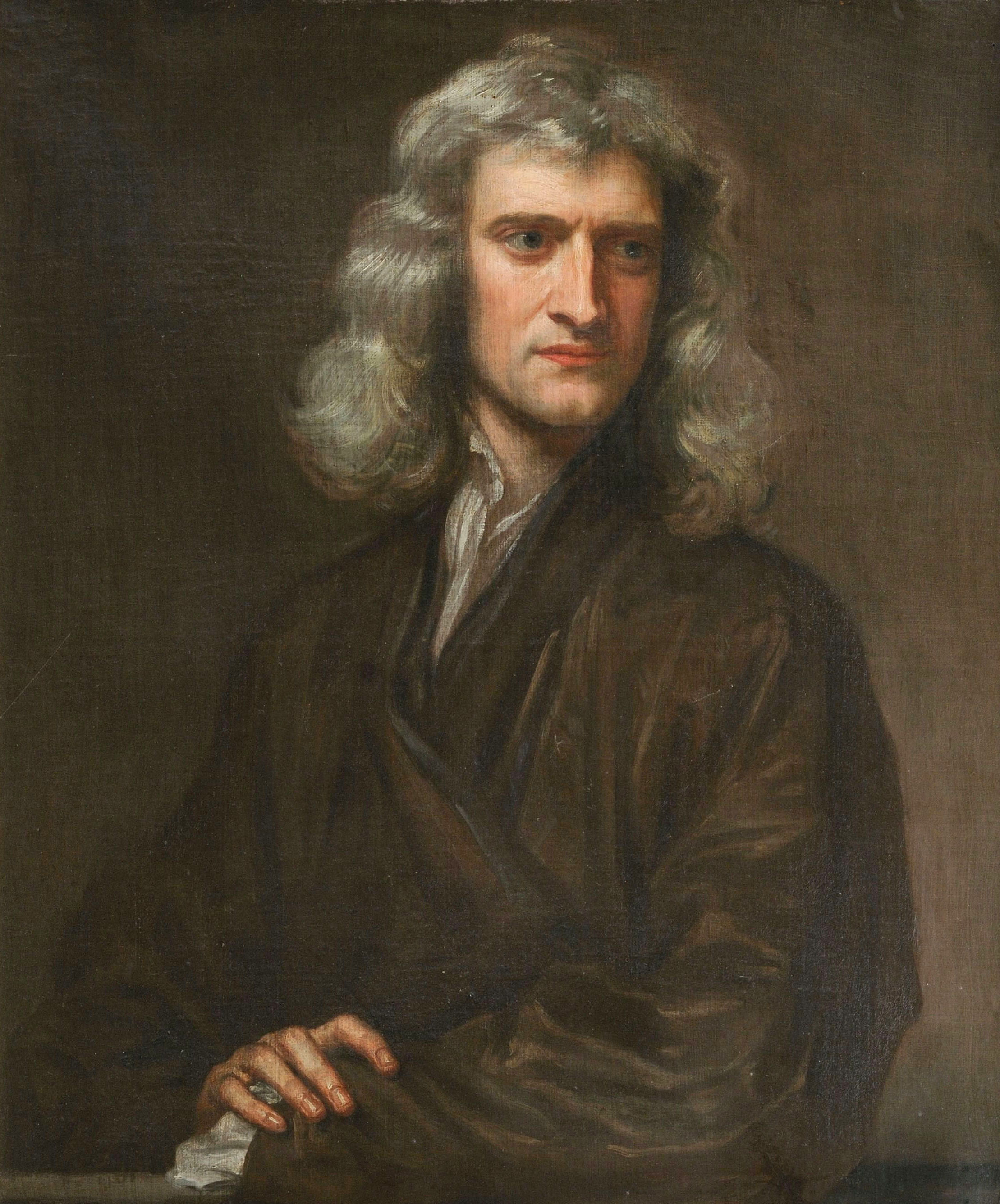Sir Isaac Newton - The Last Magician
A person sought to understand God through His creations, much like an artist is known through their art. As a child, he was fascinated by windmills, building a miniature windmill and attempting to power it with a hamster wheel.
He endured a troubled family life. His father died in a war between royalists and democrats, loyal to the king, before the child’s birth. His mother, entirely out of sync with him, was like the opposing poles of a magnet. At school, he had no friends; as he later reflected, his only companion was God.
This post aims to explore how Newton’s equations were developed over time and how he stood on the shoulders of giants like Galileo and Kepler[1]. It will conclude with an engineering application and a discovery that highlight the profound impact of Newton’s work on humanity, both then and now.

The Origin of Gravitational Force
Newton was an astute observer, keenly aware of patterns in everyday phenomena, such as centrifugal force. For example, when children form a circle and spin, each leans outward from the center. Although Christiaan Huygens had named this phenomenon (but not formulated it), Newton observed it around age 12. This early insight into centrifugal force, expressed as \(F = \frac{m \times v^2}{r}\) (Equation 1), played a crucial role in his later equations for planetary motion.
The second pillar, Kepler’s discovery of the correlation between a planet’s distance and orbital period, guided Newton’s achievements. Kepler was fortunate to collaborate with Tycho Brahe [3], whose extensive data on planetary distances, speeds, and trajectories made this discovery possible. It seemed the stars aligned for Kepler’s breakthrough. Using this data, he derived the formula in Equation-2.
\[\tag{2} T^2 = G \times d^3\]
In Equation 2, ( T ) represents the orbital period, ( d ) the distance to a reference point (e.g., the Sun or Earth), and ( G ) a constant. This equation reveals that planets closer to the reference point orbit faster, assuming the same constant ( G ). Contrary to Aristotle’s long-held belief, no planet’s orbit is perfectly circular.
Let’s consider the following questions:
- Why does an apple fall straight to the ground?
- If an apple were placed where the Moon is, would it still fall to the ground?
- Why doesn’t the Moon fall to the ground? What keeps it in orbit?
These questions, which Newton pondered during the Great Plague while in quiet reflection in his village, were pivotal. They led to his ground breaking discoveries, later built upon by Einstein.
One possible answer to the third question is that the forces between the Moon and Earth are balanced: gravity pulls the Moon toward Earth, while centrifugal force acts outward due to its orbit. To develop equations based on this idea, we need expressions for both gravity and centrifugal force. To understand centrifugal force, consider a simpler analogy: you’re holding a rope tied to an anchor point and rotating around it. If we think about on the parameters to understand the dynamics of rotation, those parameters are as follows:
- Angular velocity (rotation speed)
- Radius (rope length)
- Mass (your weight)
The tension on the rope is representing the force between Moon and Earth, when Moon is taken as reference point in terms of force directions, gravity of the earth direction is from Moon to Earth and centrifugal force is on opposite direction(Consider Earth as anchor point and Moon is turning around Earth, and imaginary rope is there).
To understand the Moon’s orbit, let’s evaluate how angular velocity, radius, and mass affect the rope’s tension.
| Parameter Name | Effect on Tension |
|---|---|
| Angular speed | Higher angular velocity increases tension, resulting in greater centrifugal force. |
| Length of the imaginary Rope | A shorter rope increases tension, assuming constant angular velocity and mass. |
| Weight | Greater mass increases tension on the rope. |
Using the rope analogy, we can derive the centrifugal force as in Equation-3. Constants will be denoted as \(G_x\) throughout this post.
\[\tag{3} F = \frac{G_{1} \times m \times v^2}{d}\]
We’ll address why velocity is squared later. Equation-3 wasn’t Newton’s starting point; instead, he began with Equation-4. We’ll first explore Equation-4 and then derive Equation-3 to show their equivalence. Newton wondered about the term T2: its origin and purpose. He recalled seeing it in Kepler’s equation (Equation-2), which describes the relationship between a planet’s distance and orbital period. Building on Kepler’s work, Newton focused on understanding forces.
\[\tag{4} F = \frac{G_{1} \times m \times d}{T^2}\]
In Equation 4, mass ( m ) in the numerator indicates proportionality to force, while distance ( d ) in the numerator seems unexpected, as force is inversely proportional to distance. The critical term T2 in the denominator explains this. The relationship between speed, distance, and time, shown in Equation-5.
\[\tag{5} v = \frac{d}{T} \]
Now, let’s substitute T2 in Equation-4 using Equation-5. This yields Equation-6. Clearly, Equations 6, 3, and 1 are equivalent.
\[\tag{6} F = \frac{G_{1} \times m \times d}{d^2/v^2}\]
Let’s follow Newton’s approach by substituting Kepler’s equation (Equation-2) into Equation-4, yielding Equation-7.
\[\tag{7} F = \frac{G_{3} \times m}{d^2}\]
Equation-7 resembles the gravitational force between two celestial bodies, but it lacks a second mass term. Let’s recall the universal law of gravitation, shown in Equation-8.
\[\tag{8} F = \frac{G \times M \times m}{d^2}\]
The second mass in Equation-8 accounts for the attracting body, as detailed in [2]. I encourage you to read this source for a deeper understanding of this derivation.
How Newton’s Equation Impacts Humanity
This section presents two examples in chronological order to illustrate the profound impact of Newton’s equation.
The first example is the discovery of Neptune, which demonstrates the remarkable power of Newton’s equation. This achievement is credited to French astronomer and mathematician Urbain Le Verrier. Using Equation-8, the law of gravitation, Le Verrier predicted Neptune’s existence before its observation. After complex calculations, he provided precise coordinates to colleagues in Berlin, who aimed their telescope and confirmed Neptune’s existence, marking a triumphant moment.
The second example is the Moon landing. In 1957, Russia launched the first satellite, Sputnik, overtaking the USA in the Cold War space race. Approximately 1,000 scientists and engineers worked to achieve the Moon landing, spurred by President Kennedy’s motivational speech. The task can be divided into three phases:
- Launching from Earth
- Landing on the Moon
- Returning to Earth after three astronauts stepped onto the Moon
Equation-8 appears simple, but its application is complex. It must be applied to three bodies: the spacecraft, Earth, and Moon. Forces act between the spacecraft and Earth and between the spacecraft and Moon. As the spacecraft’s distance from Earth and the Moon constantly changes over the 400,000 km journey, Equation-8 requires continuous calculation. This is known as the three-body problem [4]. The Earth and Moon move as the spacecraft travels. The optimal trajectory leverages Earth’s rotation to minimize fuel use, reducing the spacecraft’s weight below a specific threshold.
These calculations were performed by powerful IBM computers, with the optimal and most cost-effective trajectory taking several years to compute. This monumental challenge began in 1961, culminating in astronauts landing on the Moon in 1969. The 110-meter-tall rocket exemplified the scale of this achievement. This was humanity’s first step into space, akin to an explorer venturing into the unknown.
References
[1] Kepler and Galileo
[2] Five Equations That Changed The World
[3] Tyco Brahe worked closely with his colleagues in Praha, and he lived in Praha
[4] Three Body Problem TV Series and the Book
